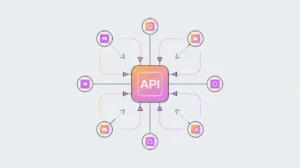Importance of Continuous Learning Systems
Continuous Learning Systems refer to organizational approaches that prioritize ongoing skill development, adaptation, and feedback in response to changing technologies and environments. In the AI era, where tools and practices evolve rapidly, continuous learning ensures that individuals and teams remain capable, relevant, and resilient. Its importance today lies in the accelerating pace of AI adoption, which demands more than one-time training. This requires organizations and communities to cultivate sustainable habits and cultures of lifelong learning.
For social innovation and international development, continuous learning systems matter because mission-driven organizations must adapt to emerging technologies while staying grounded in community needs and equity.
Definition and Key Features
Continuous learning systems go beyond traditional training programs by embedding learning opportunities into everyday workflows. They may include microlearning modules, peer-to-peer knowledge sharing, learning management platforms, or AI-enabled personalization of training content. At the organizational level, they reflect a shift from static skill development to adaptive, iterative approaches.
This is not the same as professional development offered in isolation, which often occurs in one-off workshops. Nor is it equivalent to capacity building alone, which may focus narrowly on technical skills. Continuous learning systems integrate feedback, reflection, and practice into daily work.
How this Works in Practice
In practice, continuous learning systems might involve NGOs deploying AI-based platforms that recommend tailored training to field staff, or development agencies setting up peer learning networks where lessons from pilots are shared across regions. Feedback loops ensure that new skills are applied, tested, and refined in real-world contexts.
Challenges include limited resources for sustained training, donor pressures that prioritize short-term outputs over long-term capacity, and disparities in digital literacy. Embedding learning into workflows requires leadership commitment and cultural change.
Implications for Social Innovators
Continuous learning systems are vital across mission-driven sectors. Health programs must equip staff to adapt to evolving diagnostic tools and telemedicine systems. Education initiatives can use continuous learning to support teachers adopting AI-enabled platforms. Humanitarian agencies can refine crisis response by systematically learning from each deployment. Civil society organizations use continuous learning to remain agile in advocacy and governance.
By investing in continuous learning systems, organizations ensure that their people can adapt to AI-driven change while remaining mission-focused and community-centered.







